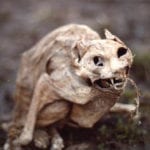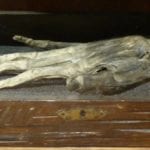 Crime
Crime  Crime
Crime  Technology
Technology 10 Hilariously Over-Engineered Solutions to Simple Problems
 Miscellaneous
Miscellaneous 10 Ironic News Stories Straight out of an Alanis Morissette Song
 Politics
Politics 10 Lesser-Known Far-Right Groups of the 21st Century
 History
History Ten Revealing Facts about Daily Domestic Life in the Old West
 Weird Stuff
Weird Stuff 10 Everyday Products Surprisingly Made by Inmates
 Movies and TV
Movies and TV 10 Actors Dragged out of Retirement for One Key Role
 Creepy
Creepy 10 Lesser-Known Shapeshifter Legends from Around the World
 Animals
Animals 10 Amazing Animal Tales from the Ancient World
 Gaming
Gaming 10 Game Characters Everyone Hated Playing
 Crime
Crime 10 Terrifying Serial Killers from Centuries Ago
 Technology
Technology 10 Hilariously Over-Engineered Solutions to Simple Problems
 Miscellaneous
Miscellaneous 10 Ironic News Stories Straight out of an Alanis Morissette Song
Who's Behind Listverse?

Jamie Frater
Head Editor
Jamie founded Listverse due to an insatiable desire to share fascinating, obscure, and bizarre facts. He has been a guest speaker on numerous national radio and television stations and is a five time published author.
More About Us Politics
Politics 10 Lesser-Known Far-Right Groups of the 21st Century
 History
History Ten Revealing Facts about Daily Domestic Life in the Old West
 Weird Stuff
Weird Stuff 10 Everyday Products Surprisingly Made by Inmates
 Movies and TV
Movies and TV 10 Actors Dragged out of Retirement for One Key Role
 Creepy
Creepy 10 Lesser-Known Shapeshifter Legends from Around the World
 Animals
Animals 10 Amazing Animal Tales from the Ancient World
 Gaming
Gaming 10 Game Characters Everyone Hated Playing
10 Bizarre Objects Found On Beaches
Over the years, an assortment of bizarre items has been found on the world’s beaches. Some have been living creatures; others, dead marine animals; still others, inanimate objects. A strange sea foam has washed ashore, carrying a variety of everyday items with it that beachgoers don’t see on the beach every day. Cast-off casings and even a phallic animal out of Sigmund Freud’s worst nightmare have also washed or crawled ashore. As this list of 10 bizarre objects found on beaches indicates, the mysteries of the deep are strange, indeed.
10 Strangest Things Found In Sewers
10 Glowing Rock
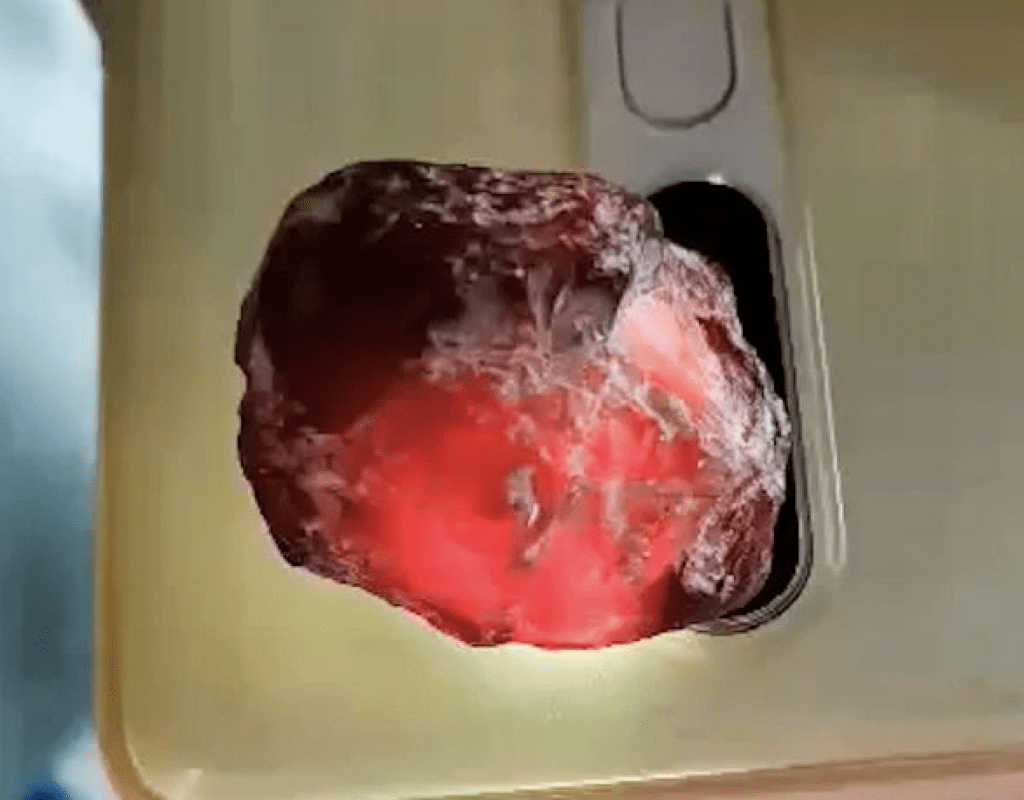
On February 22, 2021, Mantana Dao Pibul decided to go for a walk on the beach in Nakhon Si Thammarat province, Thailand. There, she saw a piece of coral. Collecting it as a souvenir, she took a closer look at her discovery—and found that the bizarre object was glowing! She shone the light from her phone on the strange specimen, and, when its red color brightened, she wondered whether the object could be a meteorite. After she returned home, she observed that the unusual mineral had changed color. Instead of red, it was now purple. Neither Mantana nor her friends have been able to identify the strange object. She hopes an expert might be able to tell her what she found during her walk on the beach.
9 Blue Dragons
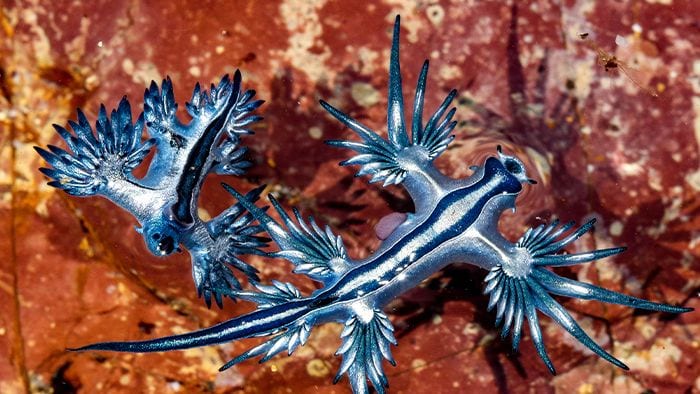
It’s light blue, and it looks like a lizard, the dark-blue coloration on its back outlining its body. The marine animal’s feet are quite different from those of a reptile, though, seeming to explode in bizarre starbursts, the spiky rays of which differ in length from one another. Although it’s usually called a blue dragon, scientists know it as Glaucus atlanticus, a type of nudibranch, a gastropod without a shell or true gills. Normally, the blue dragon floats in the ocean, but the wind sometimes blows a whole “fleet” of them onto Australian beaches. Besides the 3-centimeter-long Glaucus atlanticus, the 13-centimeter-long Glaucilla marginate, also a nudibranch that closely resembles its smaller cousin and is likewise called a blue dragon, occasionally blows ashore.
Both the smaller and the larger blue dragons belong to “the pleuston, which lives partly in the water and partly in the air and relies on the winds to carry them places.” Although blue dragons can’t swim against ocean currents, the tiny animals are able to spin themselves around and to perform “somersaults” by sucking air into themselves. The air forms a bubble inside them, helping them “stay afloat and [to remain] upside down.”
Despite their restricted mobility, blue dragons are predators “in their own small world,” feeding on blue buttons (colonies of hydroids) and bluebottles (colonies of polyps), while relying on their coloration to “blend in” with the ocean’s surface and avoid attacks by other predators.
8 Gooseneck Barnacles
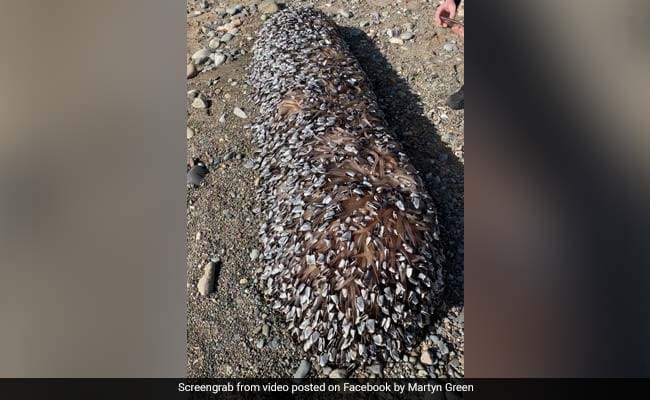
To Martyn Green, who saw it while vacationing with his family in Caernarfon, North Wales, the odd object his wife Gemma found looked like driftwood. When he examined it more carefully, however, Green discovered that the item was “covered with thousands of tentacled sea creatures.” To him, it looked like “something not of this world.”
The Internet search that Green and his son conducted solved the mystery of the marine animal’s identity. Gemma had found gooseneck barnacles. Green also made another discovery: his wife’s find was valuable. A delicacy in Spain and Portugal, gooseneck barnacles were worth £25 (US$ 34.82) each! Green estimated that the “driftwood” would yield about 2,000 of the barnacles—not a bad day’s catch.
7 Sea Foam
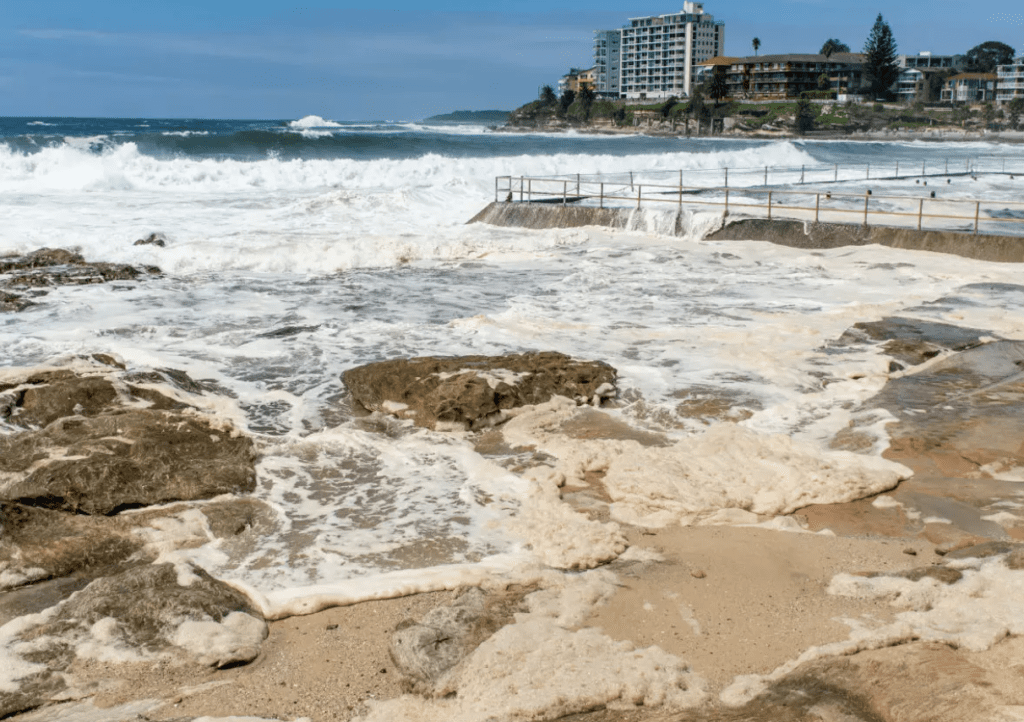
The strange sea foam that washed ashore on Australia’s beaches in New South Wales in December 2020 was a gift that kept on giving. Storms churned up the mix of “seawater . . . algae, salts, fats and pollutants” that created the “thick layer of foam” that spread over the surface of the water. Weird in itself, the foam also brought a variety of other bizarre objects to the beaches, including “deadly” sea snakes, giant spiders, trees, logs, and even “half a cow.” A dog had to be rescued from the foam, and “authorities . . . warned tourists and locals to keep away from these beaches and avoid swimming at all cost to ensure [their] safety.”
6 Unidentified Carcass
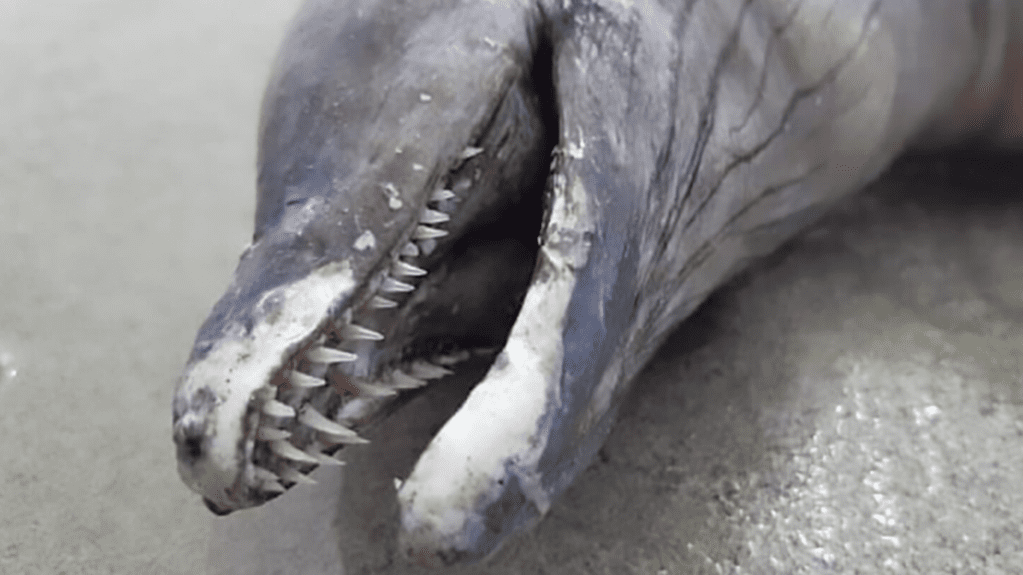
Was the eerie carcass that washed onto a Mexican beach in February 2020 a dolphin? If it was, it was certainly a strange one: it had no eyes, and its teeth were much longer, more curved, and sharper than those of dolphins’ typical short, blunt, only slightly curved teeth. And dolphins, of course, have eyes.
Maybe the mysterious creature that washed ashore at Destiladeras, in the western Mexican state of Jalisco, was an eel. Its lower body lacked fins and flukes and was much narrower than that of a dolphin’s anatomy.
While these guesses are reasonable, no one, including fishermen, could identify the carcass with any certainty. Its lack of eyes suggested that the sea creature might have come from the depths of the sea, perhaps from the 1,000-meter-deep marine area in Puerto Vallarta, although, if so, no one had any idea how the animal could have been carried onto the shore from such a depth.
5 Decapitated “Corpse”
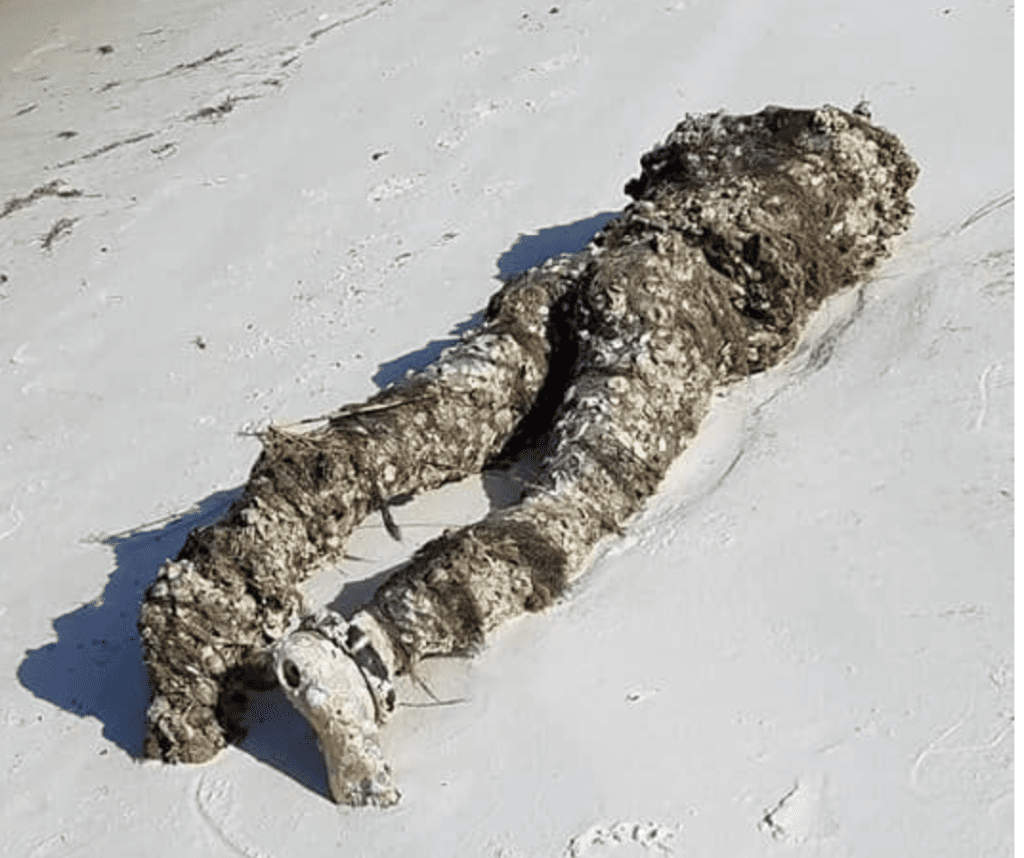
During her clean-up of a beach in Perdido Bay, in November 2020, a woman identified only as Kathleen found more than trash or debris. She encountered a headless, barnacle-encrusted corpse, which she reported to Ocean Hour, the nonprofit environmental group with whom she was doing volunteer work. A bystander had already notified the police of the macabre object.
The victim, Kathleen saw, had been decapitated—or so she’d thought. Fortunately, although the “corpse” certainly looked human, authorities determined that it was, in fact, a mannequin. Its origin and the amount of time that it had been in the water remain mysteries.
4 Sea Pork
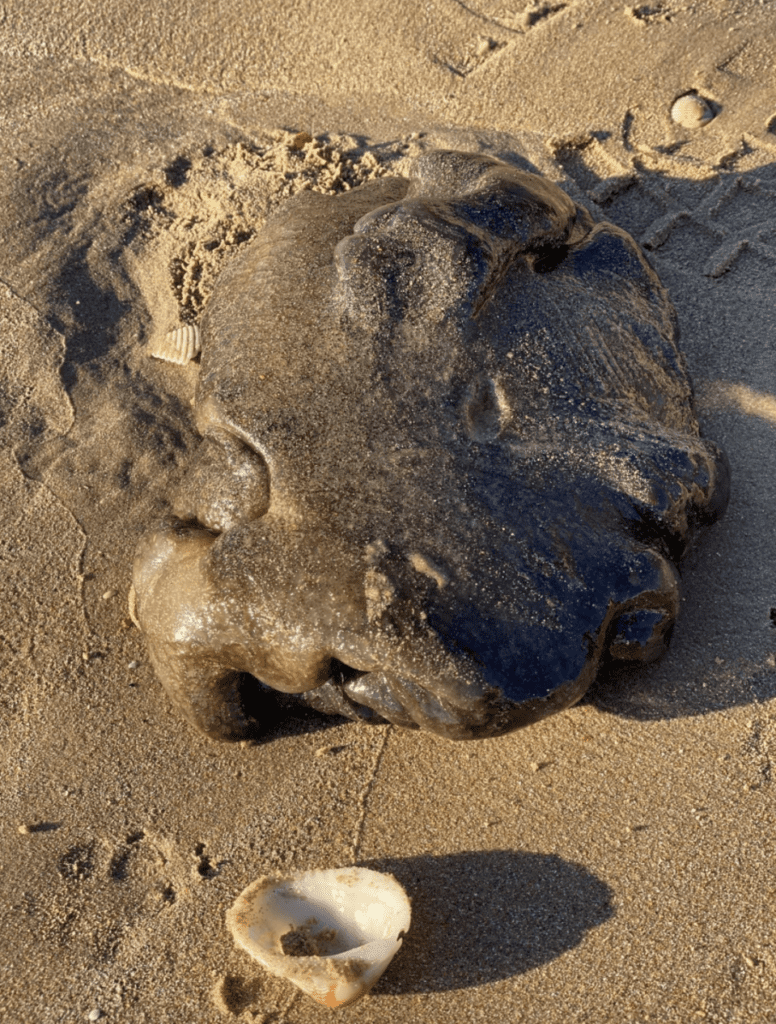
The eyes, the mouth, and a portion of the face and head could be discerned in the “strange mass” that the sea deposited on the sands of Urangan Beach in Hervey Bay, Southern Queensland, Australia, in February 2020. The woman who discovered it posted a photograph of her find on Facebook, but none of the members of the social media group could identify the remains. They agreed only that the discovery was not part of a stone fish, because stone fish have rough skin, but the creature the woman found and photographed had smooth flesh.
Group members took several stabs at identifying the “lump,” venturing such guesses as “soft coral,” “ambergris,” “shark excrement,” and even a whale’s “placenta.” Even Professor Sandie Degnan, of the The University of Queensland’s School of Biological Science wasn’t sure what the mass was, although she suspected it was probably a sea pork, which she described as “a kind of sea squirt, related to the cunjevois,” so-called because of its tendency to “squirt out water.” Fishermen, she added, eviscerate the creatures and use the animals’ “guts as fishing bait.”
3 Hoodwinker
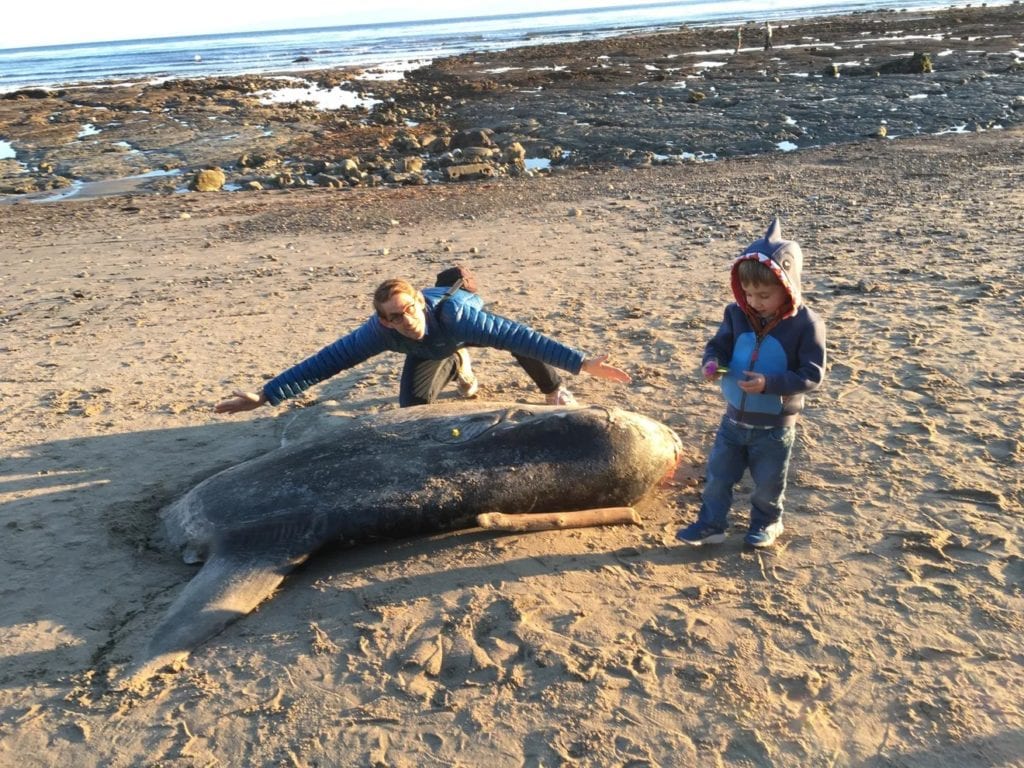
Although they are described in various ways, one depiction of the hoodwinker seems closest to its actual appearance: “an enormous . . . floating head.” Adding “with fins” would make the picture even more complete and accurate.
Hearing of the strange sea creature on Feb. 19, 2019, after it washed ashore on “the beach at Coal Oil Point Reserve, near Santa Barbara, California, conservation specialist Jessica Nielsen posted photographs of its carcass on the nature reserve’s Facebook page, where the pictures caught the eye of UC Santa Barbara’s Professor Thomas Turner. Visiting the site, he uploaded his own pictures of the sea creature on the iNaturalist social platform.
In Australia, a researcher notified marine scientist Marianne Nyegaard, suspecting that the carcass was that of a fish she’d discovered and named the hoodwinker. Sure enough, it was a hoodwinker, she confirmed, later verifying her identification through “genetic testing.” A species of sunfish, the scientific name for which is Mola tecta, the hoodwinker is common to “tropical and temperate ocean” waters. Reaching up to eight feet in length, it can weigh several thousand pounds.
Its appearance on a California beach puzzled scientists, since the hoodwinker has rarely been spotted in the Northern Hemisphere. Was it a stray? Was the creature’s seemingly sudden penchant for long-distance travel the result of the warming of oceans due to climate change? Were “changes in ocean currents” carrying the hoodwinker’s food source, jellyfish, to new parts of the ocean, causing the hoodwinkers to follow? For now, these questions remain unanswered mysteries.
2 Worm Casings
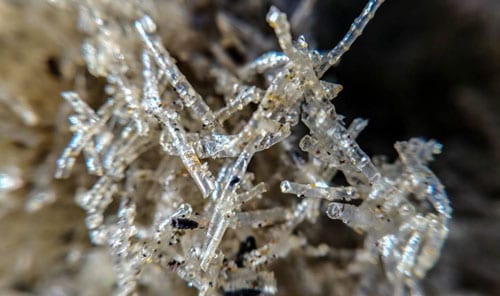
The fragile tubes look like twigs frozen in ice. The “small, silvery filament-like objects” don’t coat tree branches, though; they wash up on Oregon beaches. The dislodged shells of cellophane worms (Spichaetopterus costarum) are commonly known as “tube worm casings.” As Tiffany Boothe of Seaside Aquarium explains, cellophane worms “live just below the low tide line of sandy beaches,” where they construct and reside inside the tubes, “which become encrusted with sand” and are washed ashore and distributed along the beach by surf, “currents and upwellings.”
CoastWatch’s Fawn Custer pointed out that the cellophane worms, which “feel like hair,” are always present. At times, under “certain conditions,” they are unearthed and scattered “onshore” by the action of waves. Normally, the diminutive worms “suck in their food, tiny bits of formerly living matter,” through their tubes, which rise close to the “surface of the sand.” When their tubes are detached by surf or currents, the worms secrete “a kind of goo that eventually hardens into another tube.”
1 “Sea Penis”
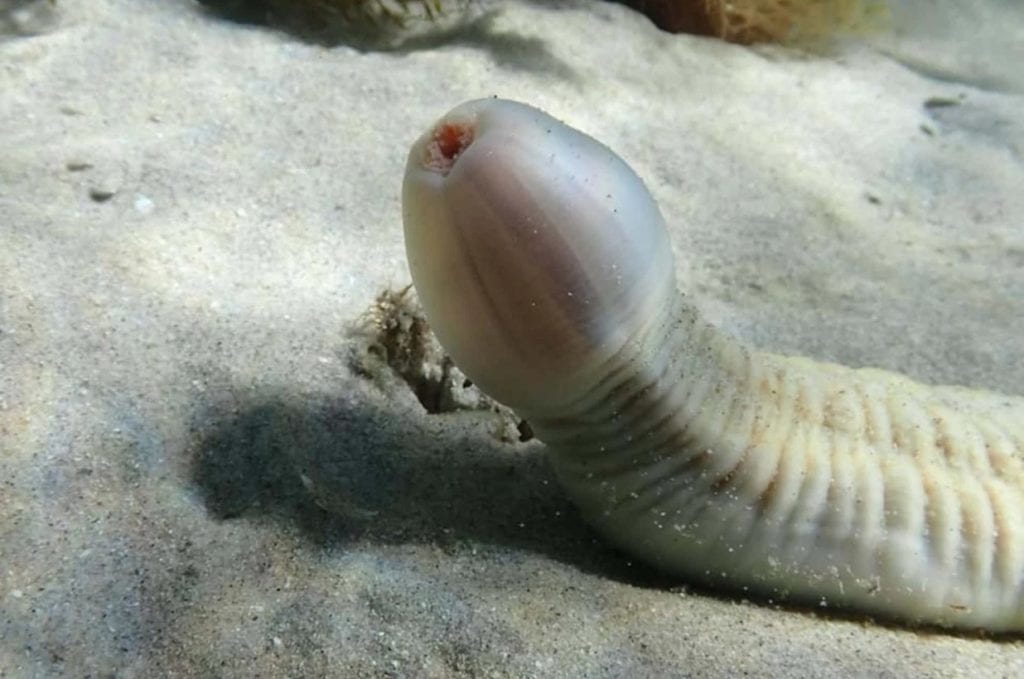
The priapulida is one of the most bizarre sea creatures ever to wash ashore on any beach, anywhere. Due to its likeness to the phallus, the unsegmented worm was named after the Greek god Priapus, who represents “male generative power.” It isn’t seen all that often because it lives on the bottom of the ocean.
According to Australian freediver Josie Jones, who came across one of the worms “on the sea floor off Rye Front Beach in Victoria,” 160 species of the creature live under the beach’s pier. The worms’ resemblance to the phallus is even more emphatic when they discharge their “eggs and sperm into the sea.”
For the fun of it, Jones posted a photograph of the priapulida on Facebook, which occasioned a lot of jokes, mostly of the sophomoric variety. Even comedian Mark Normand got into the act, commenting, “Ladies, if you aren’t satisfied at home, remember there are plenty of fish in the sea.”
10 Bizarre Objects Found In Porta Potties
About The Author: An English instructor at the University of Nevada Las Vegas, Gary L. Pullman lives south of Area 51, which, according to his family and friends, explains “a lot.” His four-book series, An Adventure of the Old West, is available on Amazon.
